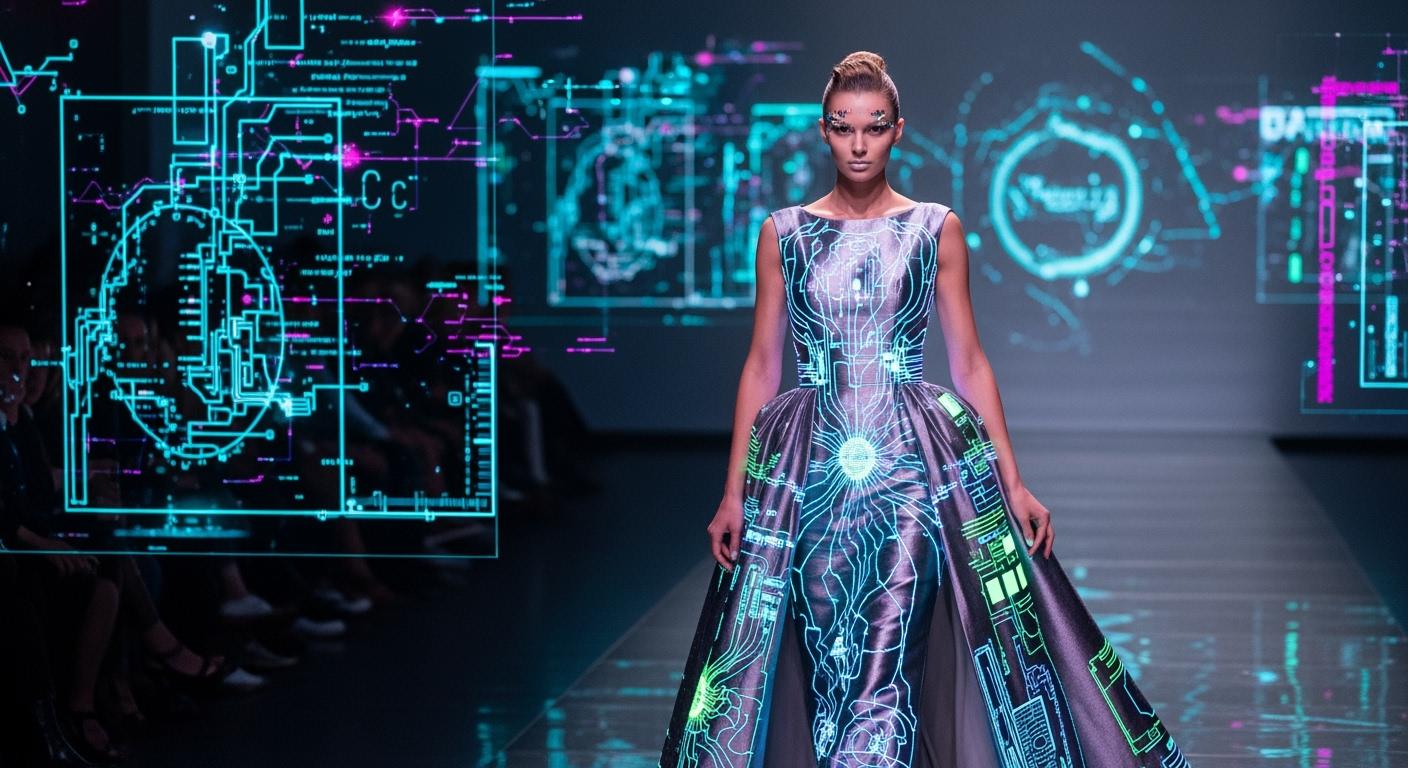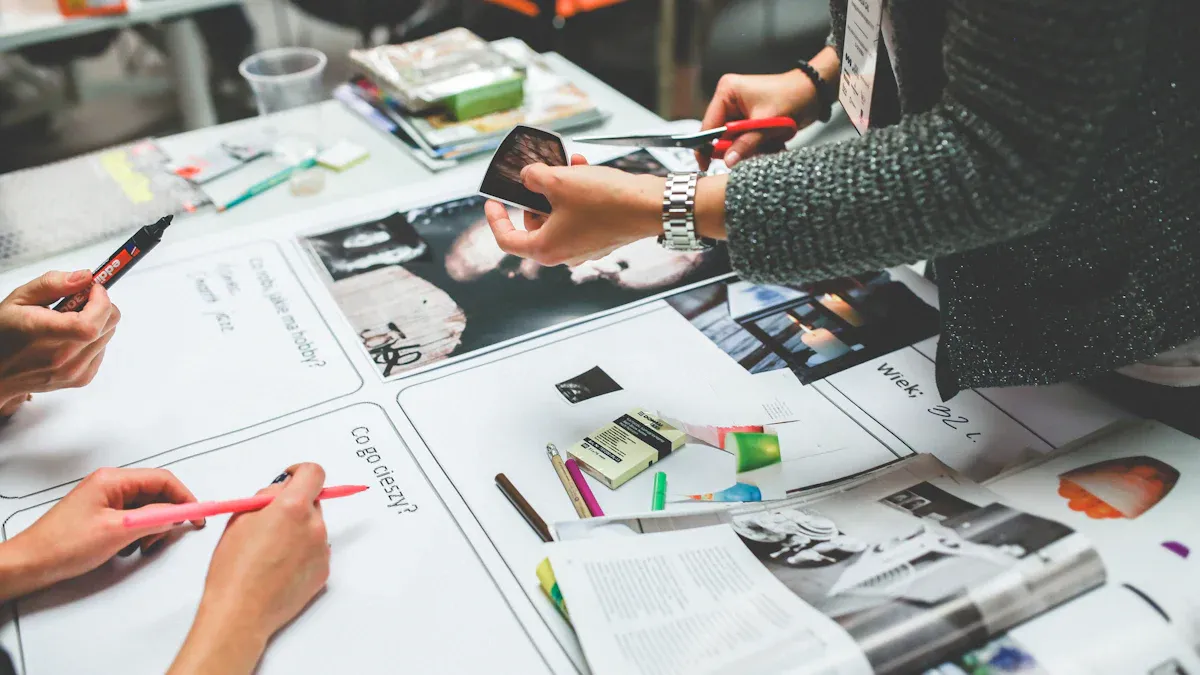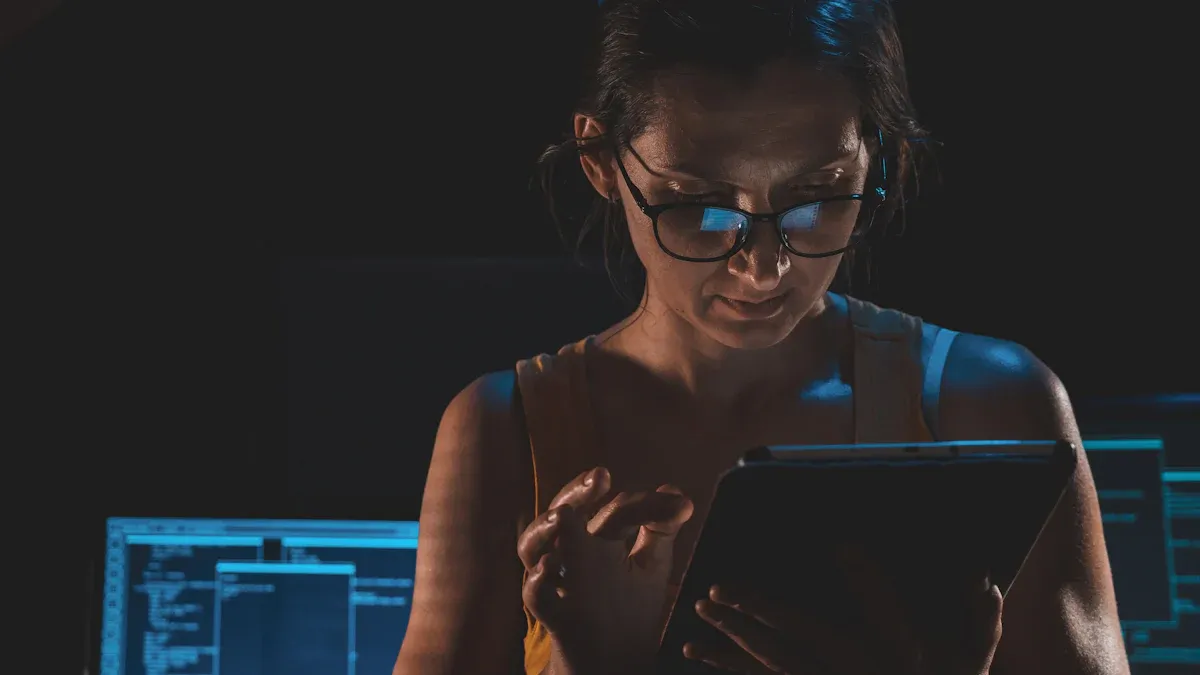
Machine learning is revolutionizing the fashion industry. This trend forecasting technology enables data-driven forecasting for the next big fashion trend. AI data analysis sifts through massive data from runways and social media. It excels at predicting fashion trends, identifying patterns in popular prints and styles.
This machine learning forecasting provides a crucial edge. Brands can now predict fashion trends with greater accuracy. This evolution in machine learning in fashion transforms raw data into strategic forecasting. This is the new era of fashion trend forecasting, shaping the future fashion trend.
Gathering Trend Data Sources

Effective forecasting begins with high-quality data. Machine learning models need a vast and diverse collection of information. This data provides the foundation for identifying the next major fashion trend.
Capturing Runway and Social Media Imagery
Analysts first gather millions of images. They collect high-resolution photos from global fashion weeks in New York, Paris, and Milan. Digital archives like NOWFASHION provide a deep well of runway imagery. The process then moves to the digital world of social media. A comprehensive social media analysis tracks viral posts on Instagram and TikTok. This is where experts monitor top influencers and what their followers are wearing.
Specialized tools scrape these platforms for visual content and metadata. This work is crucial for understanding fashion trends and social media. Companies like Heuritech excel at this, analyzing visual and textual patterns to detect early trend signals. They scan images from influencers to see which patterns gain traction, giving a real-time view of the market. This constant stream of images from influencers helps build a dynamic picture of the evolving fashion landscape. The data from influencers is a key part of modern forecasting.
Integrating Sales and Archive Data
Visuals alone do not tell the whole story. Quantitative data adds a critical layer to the analysis. Brands integrate historical sales figures to see which prints have sold well in the past. This information reveals true market demand.
- Zara uses real-time sales data to quickly adapt to a new trend.
- Stitch Fix analyzes purchase histories from influencers and customers to personalize selections.
This combination of data sources creates a powerful forecasting engine. By analyzing what influencers promote and what customers actually buy, brands gain a complete market view. This approach moves fashion beyond intuition, grounding design decisions in solid evidence for more accurate trend forecasting.
Archival data also improves the accuracy of any fashion prediction. Looking at the lifecycle of a past trend helps models understand patterns of growth and decline. This historical context allows the system to correct for biases and make a smarter forecasting decision. It ensures the fashion industry can confidently anticipate the next big market shift.
Applying Machine Learning Models

Once data is gathered, the real work of machine learning begins. Raw images and sales figures are just numbers until algorithms process them. This stage transforms a chaotic collection of fashion data into a structured format, preparing it for trend analysis. The process relies on powerful image recognition technology to make sense of visual information.
Preprocessing and Image Segmentation
Before any analysis, the data must be cleaned and standardized. This preprocessing step ensures that machine learning algorithms receive high-quality input, which is essential for accurate outcomes. The technical preparation involves several key actions:
- Standardize Images: All images are resized to a uniform dimension, such as 224x224 pixels.
- Normalize Data: Pixel values are scaled to a consistent range, typically between 0 and 1. This helps the model learn more efficiently.
- Encode Labels: Text-based data, like print names, is converted into a numerical format that algorithms can understand.
- Batch and Shuffle: The dataset is grouped into smaller batches and shuffled randomly. This prevents the model from learning any unintended order in the data.
After standardization, the next critical task is image segmentation. This process uses advanced image recognition technology to digitally "cut out" the garment from its background. Models like Mask R-CNN, YOLO, and SAM excel at this, drawing a precise outline around a dress or shirt, even in a cluttered runway photo. This isolation ensures the algorithms focus only on the item of interest, ignoring distracting elements.
Feature Extraction and Classification
With clean, segmented images, the machine learning models can now learn to identify specific fashion attributes. This is where the system learns to see like a fashion expert, recognizing the visual elements that define a trend.
Convolutional Neural Networks (CNNs) are the core of this process. These powerful algorithms analyze images in layers to identify key visual features.
- Initial layers detect simple elements like edges, colors, and corners.
- Deeper layers combine these simple features to recognize complex patterns, textures, and shapes, such as a floral print or a specific sleeve style.
To train these models, data scientists often use benchmark datasets like Fashion-MNIST. This dataset contains thousands of labeled fashion images, providing a solid foundation for teaching an algorithm to differentiate between item categories. This is a fundamental step in building reliable image recognition technology.
Once the CNN extracts the features, classification algorithms assign a specific label to the print (e.g., 'plaid', 'animal print', 'stripes'). This automated labeling of millions of images creates a massive, searchable database of fashion trends. But what about a new trend that has no label yet? For this, analysts use clustering algorithms. These algorithms group visually similar images together without predefined labels. For example, a cluster of images featuring vibrant, abstract shapes might signal an emerging "micro-trend" before it has a name, giving brands a first look at the future of fashion. This is the true power of machine learning in fashion.
The Process of Fashion Trend Forecasting
After models classify fashion data, the next step is turning that information into a coherent forecast. This is where analysts use time-based analysis to understand a trend's lifecycle. The goal is to predict fashion trends with a high degree of confidence. This process transforms millions of data points into a clear story about what consumers will want to wear in upcoming seasons.
Time-Series Analysis of Print Popularity
Analysts use time-series analysis to map the popularity of a print or style over time. This method tracks how often a specific trend appears in social media posts, runway shows, and sales data. The resulting data creates a popularity curve for each trend. This curve shows its journey from an initial signal to peak popularity and eventual decline. This is a core component of modern fashion trend forecasting.
This predictive analytics approach allows brands to see emerging trends before they hit the mainstream market. For example, a mid-sized retailer used an AI platform to monitor social sentiment and sales. The data revealed a surge in demand for eco-friendly fabrics. The company quickly switched production to sustainable materials, boosting sales and customer loyalty.
Success in this stage is measured by specific Key Performance Indicators (KPIs). These metrics show how well the forecasting aligns with actual market performance.
- Sell-through Rate: This shows how quickly inventory sells, reflecting accurate demand forecasting.
- Inventory Turnover: This measures how well stock is managed to avoid overproduction.
- Return on Ad Spend (ROAS): This tracks the effectiveness of marketing campaigns informed by AI.
- Conversion Rate: This shows the percentage of visitors who make a purchase.
- Sentiment Scores: These evaluate customer satisfaction through reviews and social media mentions.
Zara is a master of this process. The company uses an AI system to monitor sales across its global stores. This machine learning forecasting enables rapid production adjustments. This system helps Zara achieve an impressive 85% sell-through rate at full price, minimizing overstock and maximizing profit. This data-driven forecasting is key to its market leadership in the fast fashion industry.
Visualizing Forecasts and Predictions
Raw data and statistical models are not enough. Fashion designers and executives need clear, visual reports to make decisions. The final step in the fashion trend forecasting process is visualizing the predictions. This turns complex data into actionable insights for the upcoming seasons.
Dashboards are the primary tool for this task. They present the forecasting data in an easy-to-understand format. These platforms help teams track competitor performance and internal metrics, offering a complete market view.
- Woveninsights provides dashboards that transform complex market data into visually appealing charts. Its real-time updates help brands make informed decisions quickly.
- Style Arcade offers retail analytics and product forecasting tools. Its dashboards provide actionable insights for fashion brands, helping them plan assortments by style and size.
These tools allow teams to see the projected popularity of a trend for the upcoming seasons. A luxury brand, for instance, used advanced market analytics to predict shifts in color preferences. By analyzing customer sentiment and competitor data, it launched a new collection with unique accent colors. This collection exceeded seasonal targets, proving the power of this trend forecasting technology. This is how the fashion industry is evolving.
Business Impact and Future Challenges
Integrating machine learning into the fashion industry creates immense value. However, it also introduces new and complex challenges. Brands must navigate both the opportunities and the hurdles to succeed. This balance shapes the future of fashion.
Informing Design and Retail Strategy
AI-powered tools directly inform design and retail strategy. A market insights platform provides designers with data on emerging trends, allowing them to create relevant collections. For example, designers at Zara use generative AI to create design prototypes based on popular colors and styles. This process helps designers reduce conceptualization time and align their work with real-time market demand. The technology empowers designers to make better data-driven decisions.
The business impact is measurable and significant. AI improves both efficiency and profitability, giving brands a competitive edge in a crowded market.
- Retailers achieve over 97% accuracy in product tagging, surpassing human performance.
- Merchandisers at brands like Birkenstock reduce manual work by 20%, freeing designers for more creative tasks.
- Generative AI is projected to add between $150 billion and $275 billion to the fashion sector's operating profits.
This forecasting also optimizes inventory. By predicting consumer behavior, brands reduce supply chain errors by up to 50%. This leads to lower inventory costs and fewer stockouts, creating a more sustainable fashion model by reducing waste. The improved forecasting enhances overall business performance.
The Hurdles of AI-Driven Forecasting
Despite its power, AI-driven forecasting faces significant hurdles. The technology is not a simple plug-and-play solution. Its implementation requires careful planning and a deep understanding of its limitations. The behavior of these systems can be unpredictable.
One of the biggest challenges is the "black box" nature of complex machine learning models. The internal logic is often obscure, even to its creators. This lack of transparency makes it difficult for designers to trust or refine AI-generated suggestions, as they cannot see the reasoning behind a trend forecast. This behavior can limit creative risk-taking.
Beyond the black box, brands face several practical and ethical issues. A market insights platform is only as good as its data, and fragmented data silos remain a major obstacle. The ethical behavior of a market insights platform is also a concern.
| Area of Concern | Specific Issues |
|---|---|
| Data Collection | Gathering excessive data with unclear consumer consent. |
| Algorithmic Bias | Reinforcing social stereotypes and excluding diverse groups. |
| Transparency | Lacking explainability in how the AI makes decisions. |
Successfully predicting fashion trends with AI requires overcoming these issues. Brands must invest in clean data, develop ethical frameworks, and find a balance between machine learning in fashion and the irreplaceable creativity of human designers. This careful management of technology, data, and human behavior will define the next era of the fashion trend market.
Machine learning provides a data-driven framework for fashion trend forecasting. It analyzes vast data from runways and social media to identify the next big trend. This technology moves the fashion industry from relying on intuition to making strategic decisions with accurate forecasting. The future of machine learning in fashion promises even faster, more precise forecasting. This evolution will empower a more sustainable fashion world, making data-driven forecasting a permanent industry trend.
FAQ
How does AI predict a fashion trend?
AI analyzes millions of images from runways and social media. It identifies recurring patterns, colors, and styles. The system then uses time-series analysis to forecast which trends will grow in popularity. This process turns visual data into a predictive model for upcoming seasons.
What data does machine learning use for fashion forecasting?
Machine learning models use diverse data sources for accurate forecasting.
- Runway and social media images
- Historical sales figures
- Customer purchase histories
- Influencer content and engagement
This combination provides a complete view of emerging trends and consumer demand.
Will AI replace human fashion designers?
No, AI is a tool that assists designers. It handles data analysis and identifies potential trends. This frees designers from manual research, allowing them to focus on creative work. The technology empowers creativity rather than replacing it, leading to more informed design decisions.
What are the main benefits of using AI in fashion?
AI offers significant advantages to fashion brands. It improves forecast accuracy, reduces overproduction, and optimizes inventory management. This leads to higher sell-through rates and increased profitability. Ultimately, AI helps create a more efficient and sustainable fashion industry.
See Also
Predicting Fashion Trends and Boosting Sales with Machine Learning Insights
Delighting Customers Through Intelligent Order Fulfillment Powered by Machine Learning
Navigating Viral Trends in Fast Fashion with Advanced AI Solutions
Unveiling Global Fashion Demand: An AI-Driven Predictive Narrative
Achieving Supply Chain Excellence: AI-Powered Just-In-Time Delivery by 2025